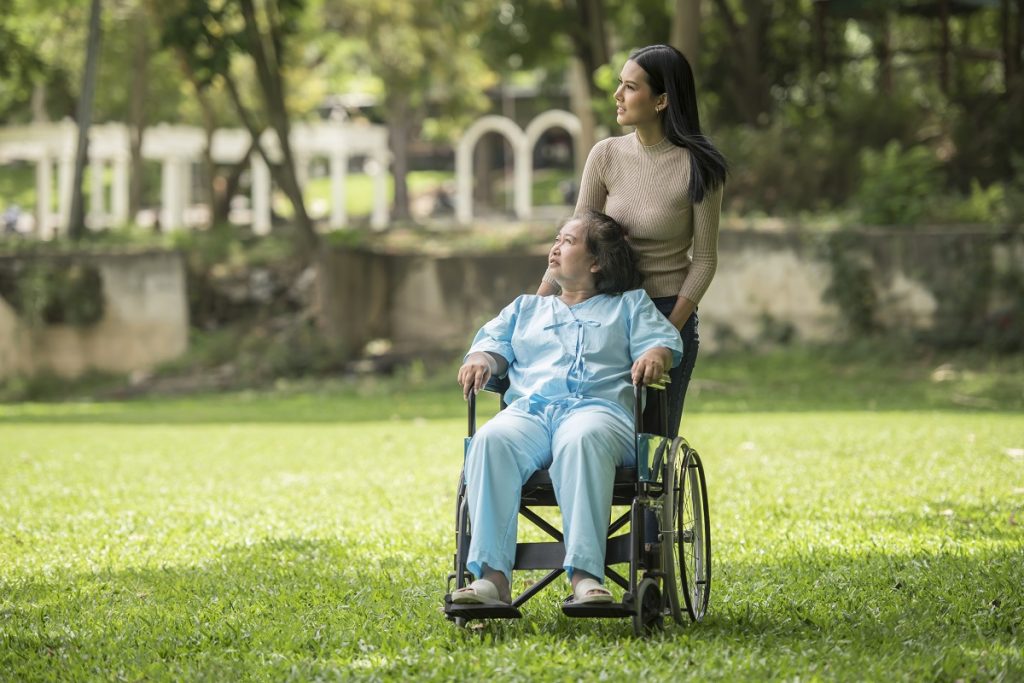The National Disability Insurance Scheme (NDIS) has been a game-changer for individuals with disabilities in Australia, providing a framework for support, inclusion, and independence. Among the various services offered under the NDIS, two critical options are NDIS Short-Term Accommodation and Supported Independent Living (SIL). These services aim to provide personalised assistance and support, but understanding the differences between them is crucial for individuals and their families when making decisions about the most suitable form of assistance. In this comprehensive guide, we will explore NDIS Short-Term Accommodation and Supported Independent Living in Australia, helping you determine which one aligns best with your needs or those of your loved ones.
Understanding NDIS Short-Term Accommodation
What Is NDIS Short-Term Accommodation?
NDIS Short-Term Accommodation, often referred to as respite care, is a service designed to offer individuals with disabilities a temporary place to stay when their regular caregivers require a break or when a change in environment becomes necessary. This service aims to provide necessary support and care while allowing individuals with disabilities to experience a short-term change in their living situation.
Eligibility for NDIS Short-Term Accommodation
Accessing NDIS Short-Term Accommodation in Australia is subject to specific eligibility criteria. Typically, this service is intended for individuals with high support needs, including those with complex medical, physical, or behavioural requirements. Eligibility assessments are usually conducted by NDIS planners or Local Area Coordinators (LACs) to determine if participants meet the criteria.
Types of NDIS Short-Term Accommodation
NDIS Short-Term Accommodation offers a range of options to cater to the diverse needs and preferences of participants:
In-Home Respite
In-home respite care enables participants to receive support and care in their own homes. Trained support workers or carers visit the participant’s home and provide the necessary assistance.
Community-Based Respite
Community-based respite involves participants staying in a community environment, such as a group home or supported accommodation facility. This option provides opportunities for social interaction and community engagement.
Facility-Based Respite
Facility-based respite offers participants the opportunity to stay in a specialised facility designed to meet their specific support needs. These facilities are equipped to handle a wide range of disabilities and provide round-the-clock care.
Benefits of NDIS Short-Term Accommodation

Choosing NDIS Short-Term Accommodation can offer several benefits to participants and their families:
Relief for Caregivers
One of the primary advantages is that it provides caregivers with a much-needed break. Caring for a loved one with a disability can be physically and emotionally demanding, and short-term accommodation allows caregivers to recharge.
Socialisation Opportunities
Participants often have the chance to socialise with peers during their short-term stays, promoting social development and reducing isolation.
Specialised Care
Facility-based respite options are equipped with trained staff who can provide specialised care, including medical support, behavioural management, and therapy services.
Safety and Well-Being
Participants’ safety and well-being are top priorities in NDIS Short-Term Accommodation, ensuring that they receive proper care and supervision during their stay.
Unpacking Supported Independent Living (SIL)
What Is Supported Independent Living (SIL)?
Supported Independent Living is another vital component of the NDIS, designed to enable individuals with disabilities to live more independently while still receiving necessary support. SIL services aim to empower participants to develop the skills and confidence needed to live as autonomously as possible. While SIL can involve shared living arrangements, its core objective is to foster independence.
Eligibility for SIL
To access Supported Independent Living services in Australia, participants must meet specific eligibility criteria. Eligibility is typically determined based on the participant’s goals and objectives related to independent living. The participant’s NDIS planner or LAC will assess whether SIL aligns with their individualised support plan.
Types of SIL Arrangements
Supported Independent Living offers flexibility in terms of living arrangements, catering to different support needs and preferences:
Shared Living
In shared living arrangements, participants share a residence with one or more housemates, who may or may not have disabilities. The level of support provided depends on the individual needs of the participants.
Individual Living
Some participants may opt for individual living, where they have their own residence, either rented or owned, with varying levels of support provided based on their specific needs.
Specialised Housing Options
SIL also offers specialised housing options for participants with unique requirements, such as accessible housing or accommodations that cater to specific disabilities.
Benefits of SIL
Supported Independent Living offers several advantages to participants seeking greater autonomy and independence:
Increased Autonomy
SIL empowers participants to make decisions about their daily lives, including managing their finances, cooking, cleaning, and other essential tasks.
Skill Development
Participants can acquire and enhance various life skills, including budgeting, meal planning, time management, and transportation.
Long-Term Independence Goals
SIL encourages participants to work toward long-term independence goals, such as pursuing further education, gaining employment, or living in their preferred community.
Community Integration
Participants have the opportunity to engage with their local communities, fostering a sense of belonging and inclusion.
Key Differences between NDIS Short-Term Accommodation and SIL
Understanding the differences between NDIS Short-Term Accommodation and Supported Independent Living is essential for individuals and their families when making decisions about the most suitable form of assistance. Here are some key distinctions:
Duration of Stay
One of the primary differences between the two options is the duration of stay:
NDIS Short-Term Accommodation: As the name suggests, short-term accommodation is temporary in nature. Participants typically stay for a short period, ranging from a few hours to a few weeks, with the primary goal being respite for caregivers or a change in environment for the participant.
Supported Independent Living: SIL arrangements are designed for more extended periods. Participants often reside in a SIL setting for an extended duration, which can range from several months to indefinitely, depending on their goals and circumstances.
Focus
The focus of NDIS Short-Term Accommodation and SIL also differs significantly:
NDIS Short-Term Accommodation: The primary focus of short-term accommodation is to provide temporary relief to caregivers and ensure the well-being of the participant during their stay. It serves as a respite option and is not intended as a long-term living arrangement.
Supported Independent Living: SIL focuses on fostering independence and helping participants acquire the skills needed to live as autonomously as possible. It is a long-term support option aimed at achieving long-term goals related to independent living.
Intensity of Support
The level of support provided varies between the two options:
NDIS Short-Term Accommodation: Short-term accommodation offers a higher level of support during the participant’s stay, with trained staff available 24/7 to meet the participant’s needs, which may include medical care, personal care, and other support services.
Supported Independent Living: SIL aims to reduce the level of support over time as participants become more independent. While participants receive support based on their needs, the ultimate goal is to minimise support as they gain skills and confidence.
Goals and Outcomes
Participants’ goals and expected outcomes also differ:
NDIS Short-Term Accommodation: The primary goal of short-term accommodation is to provide temporary relief and support to participants and their caregivers. The expected outcomes include refreshed caregivers and a positive experience for the participant during their stay.
Supported Independent Living: SIL is focused on achieving long-term independence goals set by the participant. Outcomes include increased autonomy, enhanced life skills, and progress toward long-term objectives such as employment or further education.
Choosing Between NDIS Short-Term Accommodation and SIL
The decision between NDIS Short-Term Accommodation and Supported Independent Living should be made carefully, taking into account the individual needs, goals, and circumstances of the participant. Here are some key considerations to help you make an informed choice:
Participant Goals
Consider the participant’s long-term goals and aspirations. If the goal is to achieve greater independence, skill development, and long-term community integration, SIL may be the better choice.
Support Needs
Assess the level of support required. If the participant has high support needs that are temporary or episodic, NDIS Short-Term Accommodation may be appropriate for respite and specialised care.
Duration
Think about the intended duration of support. Short-term accommodation is suitable for temporary relief, while SIL is a more long-term arrangement.
Caregiver Needs
Consider the well-being of caregivers. If caregivers need regular breaks or respite to prevent burnout, short-term accommodation can provide valuable support.
Individual Preferences
Take into account the participant’s preferences regarding living arrangements, independence, and the level of social interaction they desire.
Consult with NDIS Planner
Consult with your NDIS planner or Local Area Coordinator (LAC) to discuss the participant’s goals and assess which option aligns better with their individualised support plan.
In Australia, the NDIS offers a range of support options to cater to the diverse needs of participants. NDIS Short-Term Accommodation and Supported Independent Living are two significant choices, each with its own set of advantages and considerations. Ultimately, the decision should be based on the participant’s goals, support needs, and individual preferences. Whether it’s a temporary respite stay to provide caregivers with relief or a long-term journey toward independence, the NDIS aims to support individuals with disabilities in achieving their best possible life.
Understanding the distinctions between NDIS Short-Term Accommodation and Supported Independent Living empowers participants and their families to make informed choices, ensuring that the selected option aligns with their unique needs and aspirations. The NDIS strives to be a flexible and person-centred system, and by carefully considering the available options, participants can take full advantage of the support and services it provides across Australia.

